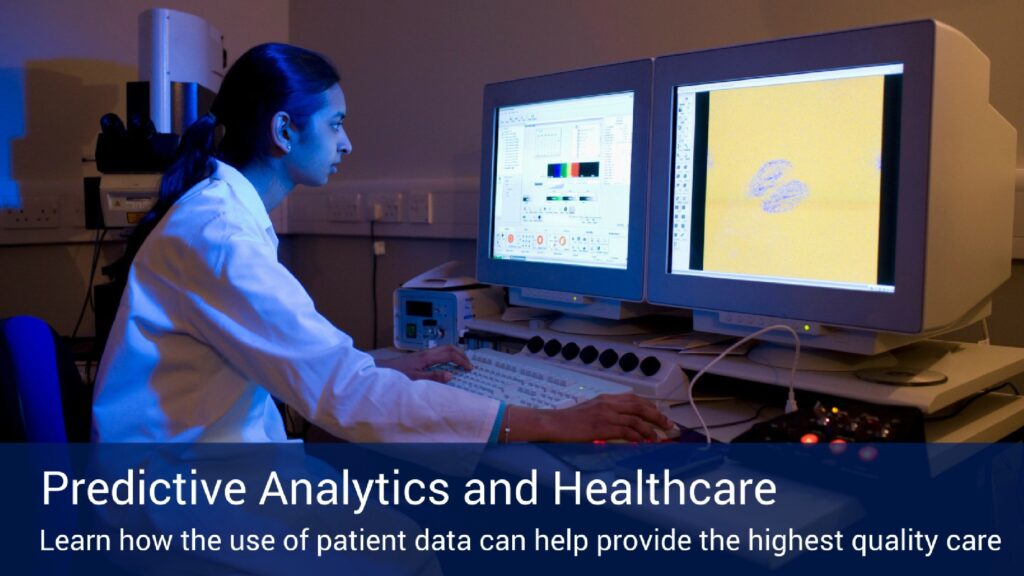
How Predictive Analytics Can Improve Patient Care and Reduce Healthcare Costs
How Predictive Analytics Can Improve Patient Care and Reduce Healthcare Costs

Last Updated August 7, 2017
A growing number of healthcare operations are using predictive analytics to figure out ways they can better serve patients.
A key area is readmissions, which has become a big issue for hospitals. About 20% of discharged elderly patients end up returning to the hospital in 30 days or less. Overall, about a third of all discharged patients return to the hospital in 90 days.
Not only does readmissions impact the health of patients, but it also raises costs for the hospital, patient, insurance companies and taxpayers who are funding care through government programs.
However, predictive analytics is offering medical operations a way to lower readmission rates and ensure their patients are receiving the highest quality of care.
Facing Fines for Readmissions
Part of the catalyst for addressing the issue is that hospitals now face penalties from Medicare for readmitting certain patients in less than 30 days. These cases include certain types of lung ailments as well as heart attacks, heart failure, pneumonia and hip and knee surgery.
The fines can reach as high as 3% of total Medicare payments. According to the U.S. Centers for Medicare and Medicaid Services, 2,655 out of a possible 3,454 hospitals were penalized in 2015. About 15% of those received 1% penalties or more, while 1% of hospitals were penalized 3%.
To lower penalties, medical facilities are taking steps to ensure patients receive proper care after discharge. For example, some issue medications to patients that they could not typically afford, or work to have medical personnel outside the hospital monitor a patient’s progress.
Predictive analytics is also playing an increasingly important role. By taking a closer look at patient data, hospitals can better identify those with a high risk of readmission. Factors include:
- Number of hospital visits in the previous six months
- Length of the original stay
- Acuity of the medical issue at admission
- Socioeconomic factors
- Past drug use
Leveraging Data Through Risk Score Reporting
Using patient data to identify those with a higher risk of readmission is known as risk score reporting, and gives hospital personnel insight into which patients need immediate attention. In this case, predictive analytics is helping hospitals simplify their workflows and allow staff to focus on patients that are truly high risk. Some of the questions asked during the creation of the risk report include:
- Does the patient have any problems with medications or are they on any high-risk medications?
- Does the patient have any psychological problems (e.g. depression, anxiety or substance abuse)?
- Does the patient have a principal diagnosis such as cancer, diabetic complications or COPD?
- Does the patient have any physical limitations?
- Is the patient able to prove they fully understand their care plan?
- Does the patient have a reliable caregiver to assist with care after they are discharged?
- Has the patient had any unplanned hospitalizations within the last six months?
Effective risk score reporting is dependent on timeliness and relevance. It’s only useful if hospital staff act quickly on data that best reflects the patient’s current situation.
To help with this, some hospitals have set up transition teams that work with patients leaving the hospital to ensure they receive proper care.
Case Study – Allina Health
Allina Health operates a not-for-profit healthcare system through Minnesota and Wisconsin that includes 13 hospitals, 90 clinics and 16 pharmacies.
Company executives adopted predictive analytics to combat high readmission rates. They decided to focus on the first seven days after hospital discharge after reviewing statistics that showed about 40% of readmissions happened in this timeframe.
One issue they discovered was that medical staff in different locations or clinical specialties used different criteria for determining if a patient was a high risk for readmission. To fix this problem, they designed a more standardized approach and set up a regular meeting between the high-risk patient, the hospital transition team, the family and the in-home health providers to determine what type of care the patient needed after discharge.
They also used predictive analytics to incorporate information from electronic health records to determine a patient’s probability of readmission, with the highest score having a 20% or greater chance of being readmitted within a month.
The result was a 10.3% reduction in patient readmissions, including a 21% reduction among moderate to high-risk patients. They also saved an estimated $3.7 million in costs due to fewer readmissions.
By taking time to educate staff, patients and all other stakeholders on how the process works, Allina providers were able to set goals for cutting down costs and reducing readmissions while providing better care for patients.




